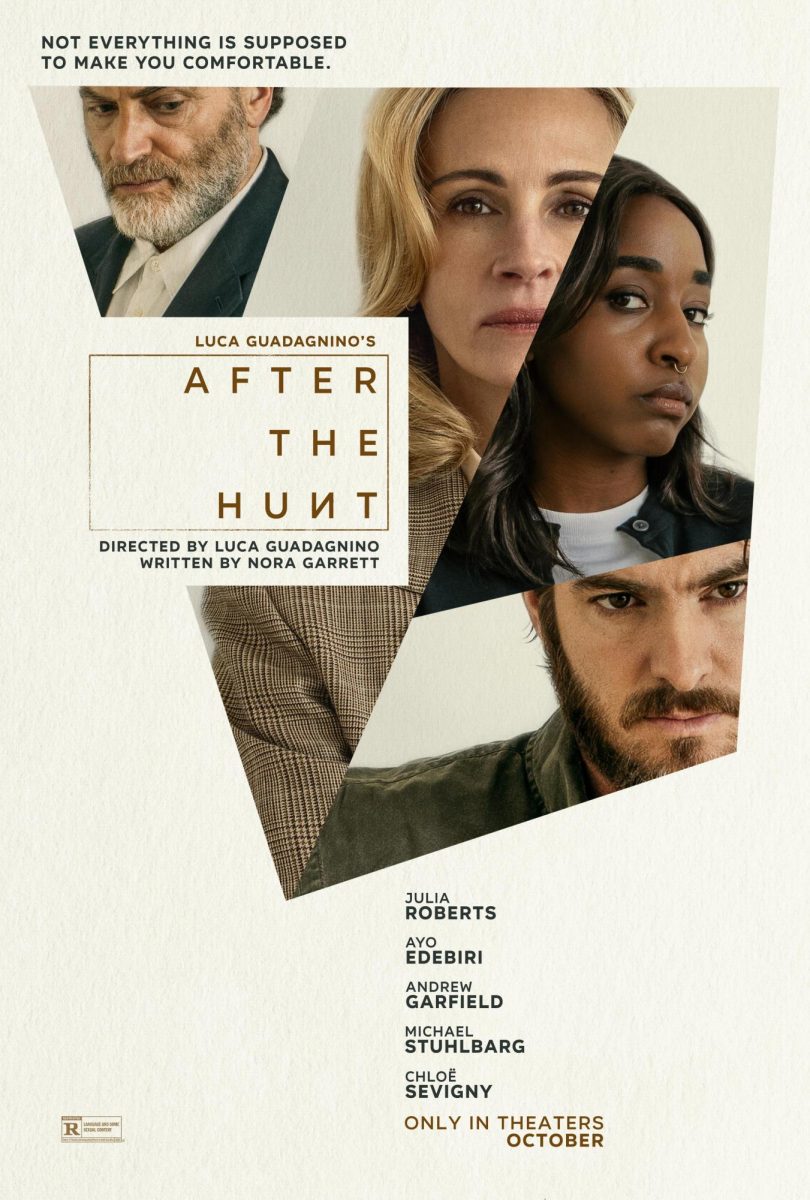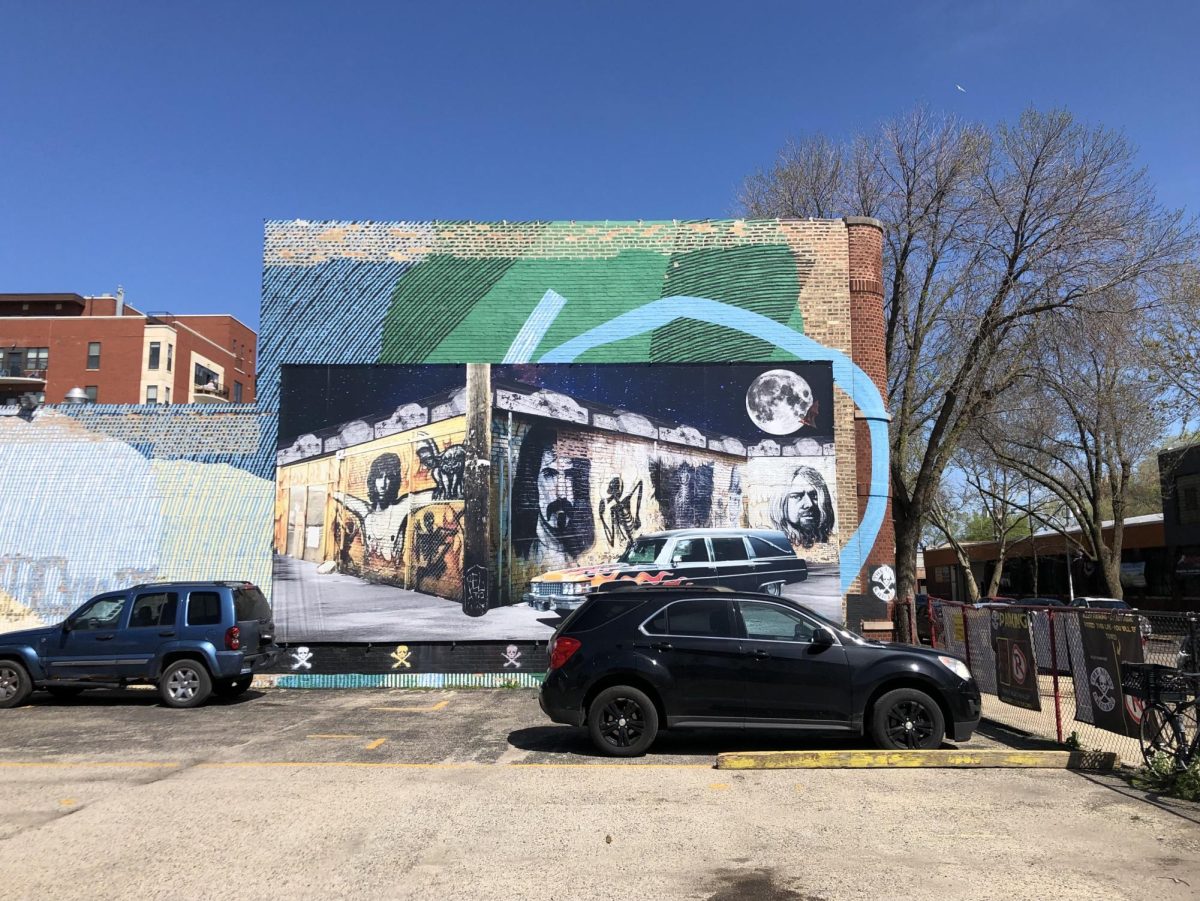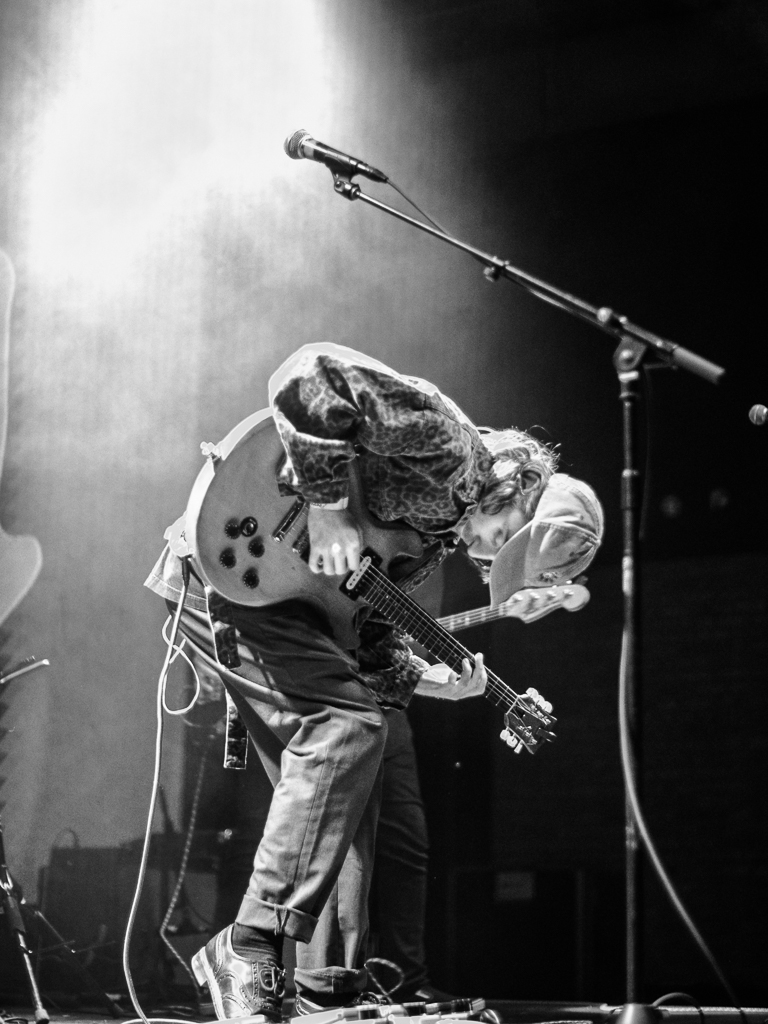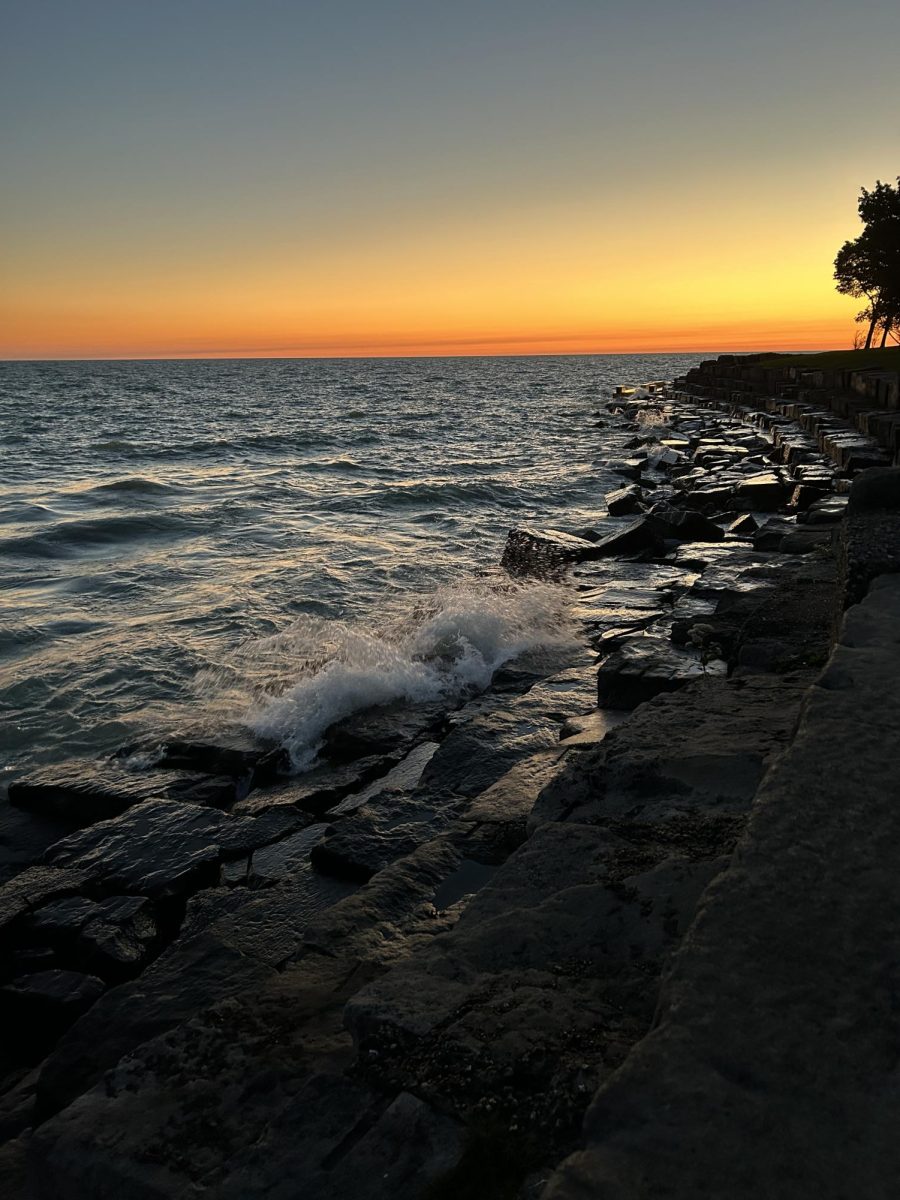Construction in Space and in the Third and Fourth Dimensions
Antoine Pevsner, 1962
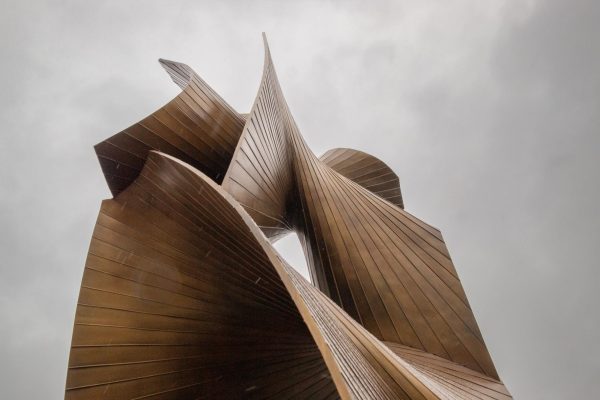
Construction in Space and in the Third and Fourth Dimension stands steadfast through its 61st winter outside the D’Angelo Law Library. Neither its sculptor, Antoine Pevsner, nor the architect who suggested a Pevsner work be installed outside the University of Chicago Law School lived to see the sculpture installed. The winter snow does little to subdue its golden-bronze glimmer, leaving only a little dust on its slopes.
Carl von Linné Monument
Frithiof Kjellberg, 1891

The scientist Carl von Linné, responsible in part for the modern biological classification system, peers through the snow across the Midway Plaisance, where he is stationed. Located just outside of the south entrance to Harper Memorial Library, the statue moved into its present location in 1976 after 85 years in Lincoln Park. He serves as a diligent observer of the boulevard ahead of him and a sentry for the campus behind.
Diarchy
Kenneth Armitage, 1957
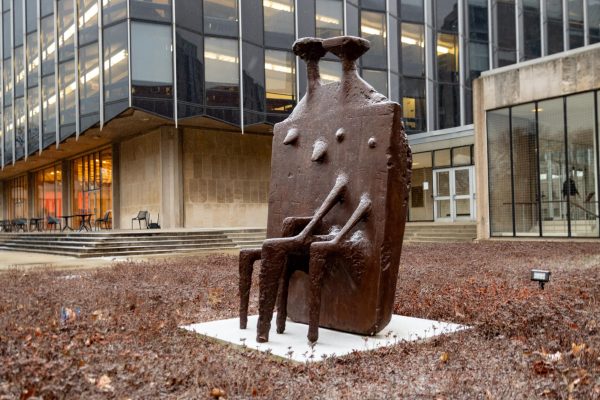
Diarchy appears with its varied appendages and surfaces in the corner of the Laird Bell Law Quadrangle. It is textured and complex, never opening up for easy interpretation. The name of the piece, thought up by a member of the British Council, reflects the two seated rulers visible in the sculpture’s form. Diarchy’s twin currently resides in London’s Tate Britain Museum.
Walt Whitman
Simon Gordon, 1958
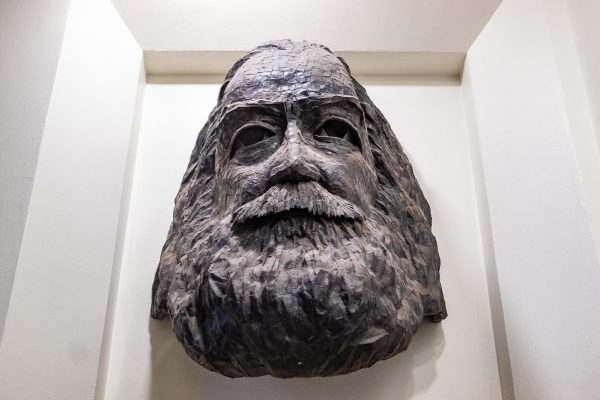
In “Song of Myself,” Walt Whitman asks, “What is that you express in your eyes? It seems to me more than all the print I have read in my life.” His statue gazes at students traveling up to the Harper and Stuart Reading Rooms, where he doubtless hopes they will read some poetry. In his rough, sculpted face lies eons of wisdom. The Harper stairwell is not the only place Whitman’s statue has lived. Previously, it hung in a Wieboldt Hall computer lab.
Dialogo
Virginio Ferrari, 1971
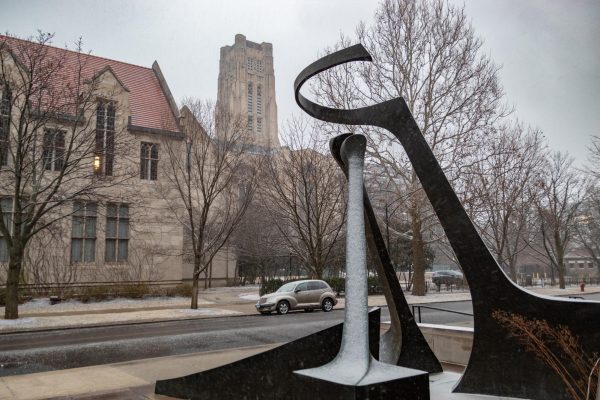
Virginio Ferrari, the sculptor of Dialogo, intended its four sections to send a message about the unity of continents. Instead, students joke that its hammer-and-sickle-like shape is supposed to be a political message. The forgiving snow, instead of sliding down, chooses to cling to the sculpture’s slopes.
Idee di Pietra (Ideas of Stone)
Giuseppe Penone, 2004
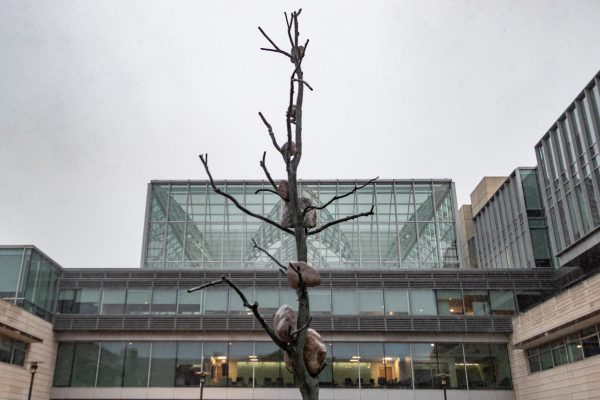
From a distance, Ideas of Stone appears to be a winter tree with rocks visiting its branches, inviting students to the Booth School of Business courtyard that surrounds it. A closer look reveals a veneer of bronze rather than wood. 21 years ago, Penone collected the sculpture’s rocks from the river outside his home.
Thalidomide #12
Jonathan Schork, 2019
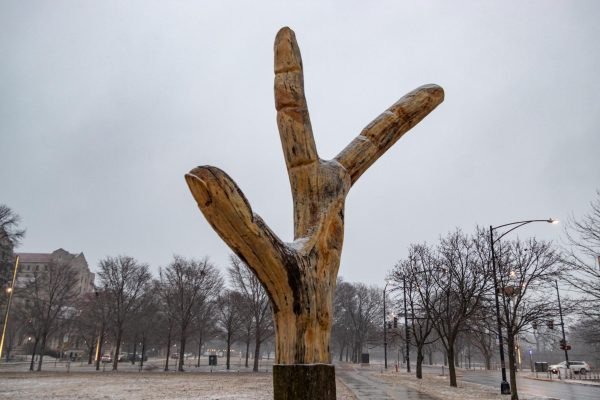
In an otherwise blank segment of the Midway Plaisance, an odd hand reaches up to greet us. It is the sculptor’s 12th work in a series of tree carvings attempting to display the effects of the pregnancy drug thalidomide on limbs. The position of the sculpture’s fingers may also remind viewers of the peace symbol.
Tomáš Garrigue Masaryk Monument
Albin Polásek, 1949
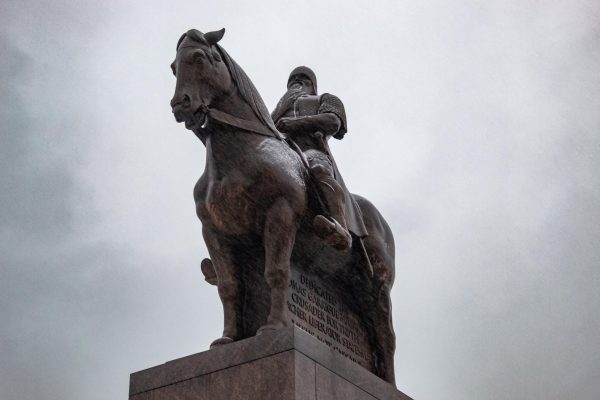
Tomáš Garrigue Masaryk and his strong stallion look over the length of the Midway Plaisance in the midst of a light snow. In real life, the statesman worked to found the country of Czechoslovakia after a period as a scholar in the United States. In bronze form, Masaryk has stood as a valorous protector of the Midway Plaisance since the 1950s.
Transformation or Green Lady
Gary Keenan, 2020
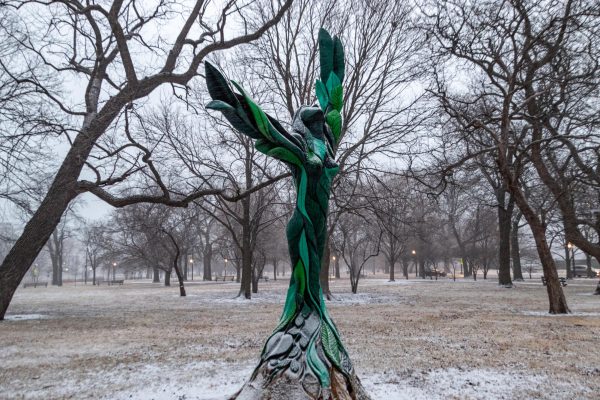
Transformation or Green Lady emerges from an ash tree near the 59th Street Metra tracks. Her green beauty conceals a difficult past: the original tree was corroded by emerald ash borers, an invasive species of beetle. Chainsaw artists like Keenan see this invasive species not just as a force for destruction but also for rebirth.
Sky Landing
Yoko Ono, 2016
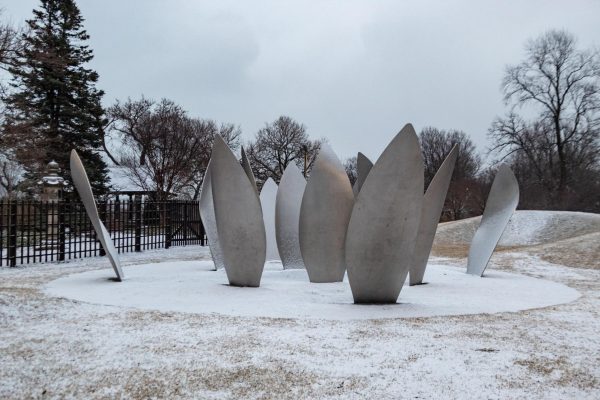
Sky Landing depicts a dozen flower petals reaching toward the sky, inviting viewers to “Imagine” what future awaits them. Fittingly, it was designed and installed by the renowned, imaginative musician and artist Yoko Ono. Beside the sculpture lies the preserved Japanese Pavilion of the 1893 World’s Columbian Exposition.
Statue of The Republic
Daniel Chester French, 1918
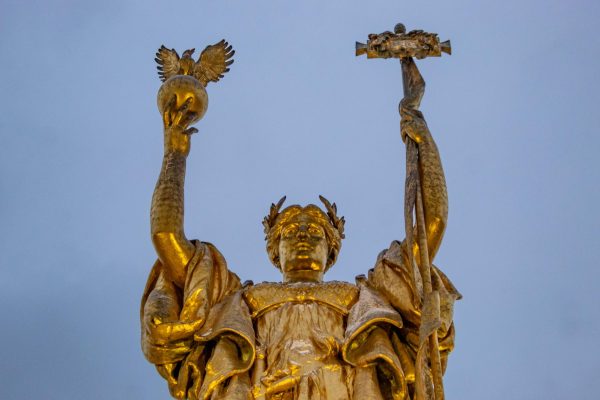
Columbia towers pleasantly over a wintry Jackson Park. She takes her form from French’s much larger statue The Republic, displayed at the 1893 World’s Columbian Exposition. Unlike the temporary plaster of the world’s fair, this incarnation stands strong in gilded bronze as a landmark of the South Side. Her message is one of peace and prosperity for the nation.
Reaching for the Stars
Terrence Karpowicz, 2024
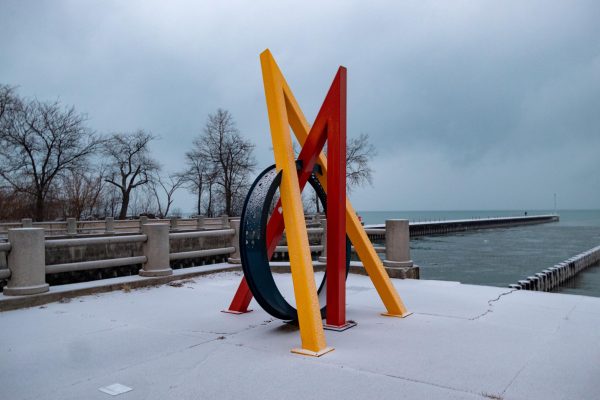
The strong few lakefront trekkers in the middle of winter will find Reaching for the Stars up against the frigid water. Its multifaceted, futuristic form demands to be viewed from all angles. When standing perpendicular to the yellow segment, viewers may notice a striking connection to the Deathly Hallows of the Harry Potter series.
Agrifolia Majoris
Nancy Rubins, 2017
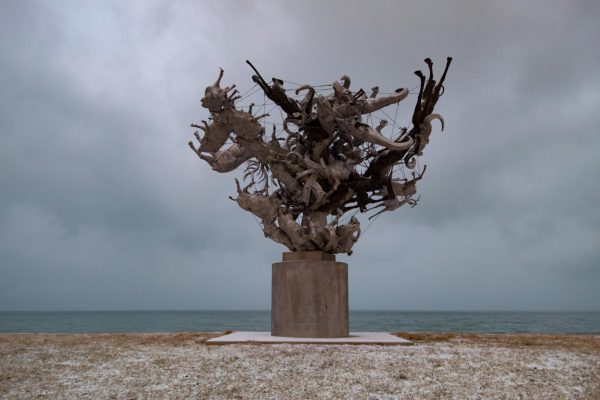
Perhaps the most complex sculpture in the Hyde Park area, Agrifolia Majoris intrigues the viewer immediately but takes a minute to truly appreciate. Its amalgamation of animals showcases the complexity of nature by subverting expectations of direction and dimension. A delicate network of wires holds the precarious arrangement above the grass and the water below.
Fountain of Time
Lorado Taft, 1922
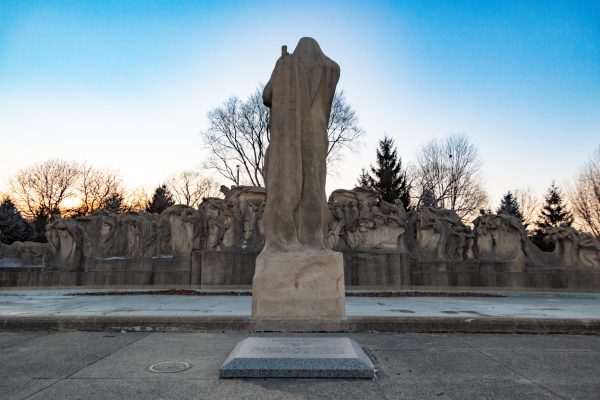
The sun sets on the towering figure of Father Time, the conductor of the monumental Fountain of Time at the edge of Washington Park. Illinois artist and UChicago lecturer Lorado Taft considered the work his very best. Henry Austin Dobson’s poem “The Paradox of Time,” which inspired the sculpture, notes, “Time goes, you say? Ah, no! Alas, Time stays; we go.”
Mother and Child
Sorel Etrog, 1968
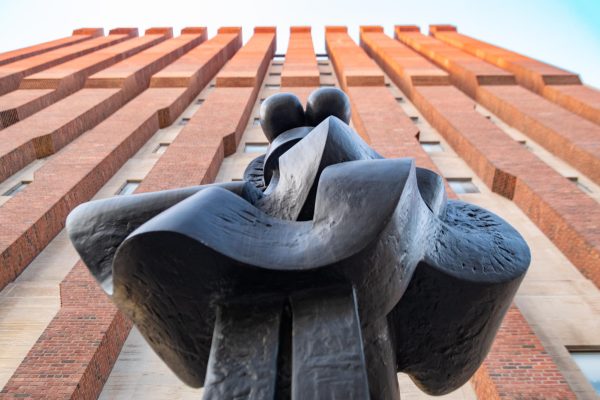
Mother and Child appears as an abstracted form of one of humanity’s most fundamental human relationships. Its position in front of Cummings Life Science Center, flanked by medical school and science buildings, is fitting. Viewed from below, the sculpture displays maternal power.
Grande Disco
Arnaldo Pomodoro, 1968
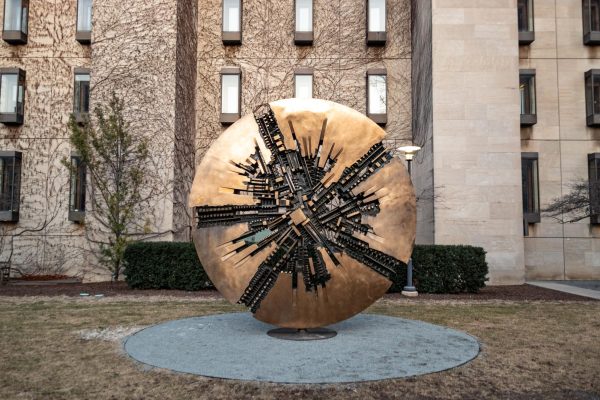
With its sleek bronze parts, Grande Disco reminds the University of its technological innovations and creativity. Students and visitors can enjoy swiveling the sculpture around its post on the Crerar Quadrangle. Its complex shape simultaneously connotes an intricate machine and a fractured disk.
Nuclear Energy
Henry Moore, 1963–67
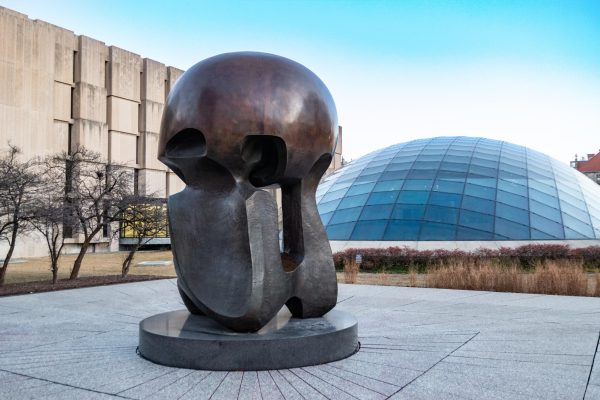
Henry Moore’s iconic Nuclear Energy sculpture commemorates the site of Chicago Pile-1 with an abstracted combination of a mushroom cloud and skull. The sculpture is located near the location of the world’s first self-sustaining nuclear chain reaction, created by Enrico Fermi under the bleachers of the old Stagg Field in 1942. Each academic quarter, students gather around the sculpture on the Monday before finals for a minute-long Primal Scream.



